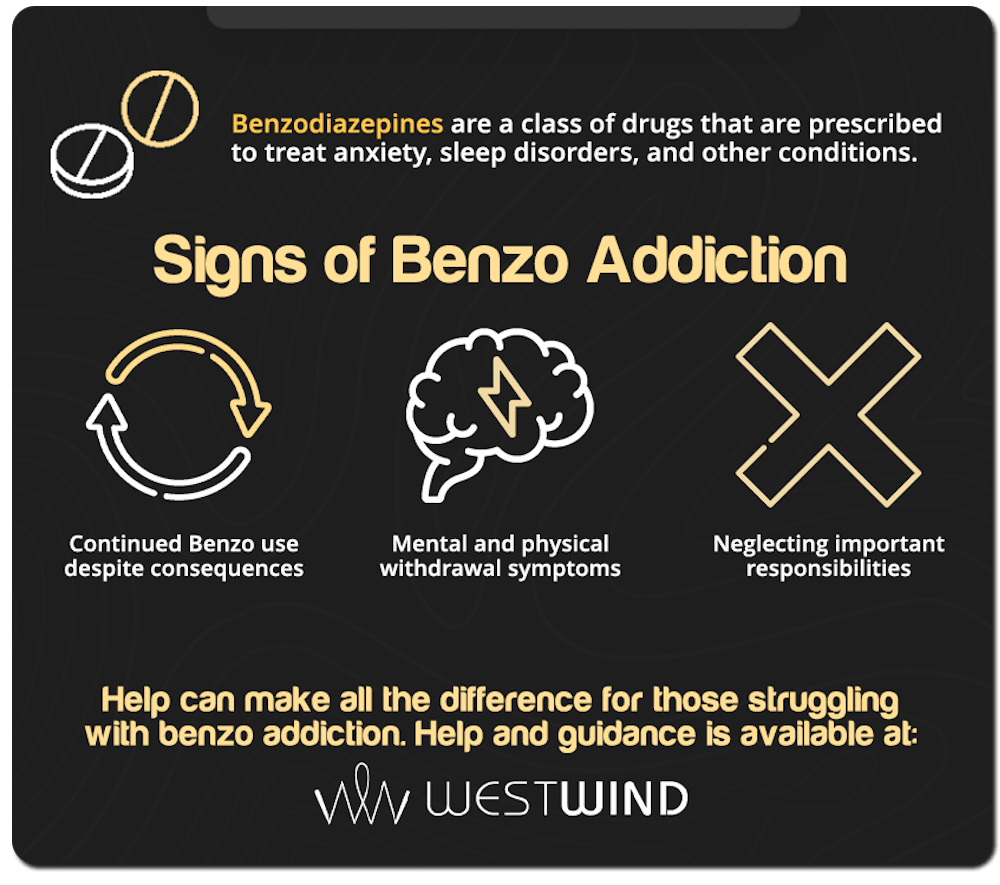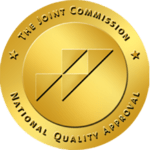
Benzodiazepine addiction is a serious condition that can develop when someone frequently uses benzodiazepines and becomes physically or psychologically dependent on them. Due to the risk of developing addiction, benzodiazepines should only be taken as prescribed by a doctor and for short periods of time.
Annually, there are 4.8 million people who struggle with benzodiazepine use. With proper treatment and support, it is possible to overcome benzodiazepine addiction and regain control over it. The rise of substance abuse is impacting Los Angeles.
What are Benzodiazepines?
Benzodiazepines are a class of drugs that are prescribed to treat anxiety, sleep disorders, and other conditions. While these medications can be helpful when used as directed by a doctor, they also carry significant risks of addiction and abuse. Over time, users may develop cravings for benzodiazepines, leading them to continue using the drug even after negative consequences.
Normally, your physician would not prescribe you benzodiazepines if you have:
- Severe lung disease or breathing problems
- Sleep apnoea (breathing problems during sleep)
- Severe liver or kidney disease
- Severe and uncontrolled myasthenia gravis (a neuromuscular condition).
What Are Common Benzodiazepines?
Some of the most common benzodiazepines include:
- Alprazolam (Xanax)
- Chlordiazepoxide (Librium)
- Clonazepam (Klonopin)
- Diazepam (Valium)
- Flunitrazepam (Rohypnol)
- Lorazepam (Ativan)
How Were Benzodiazepines Created?
Benzodiazepines are a type of medication that was created in the 1950s. These drugs were designed to be a safer alternative to barbiturates, which were commonly used at the time and had a high risk for overdose. Benzodiazepines work by depressing the central nervous system, which can help to calm anxiety and produce sleepiness.
How Are Benzodiazepines Abused?
Benzodiazepines can be abused by taking them in larger doses than prescribed, taking them more often than prescribed, or by taking them without a prescription. Some people may crush the pills and snort them, while others may dissolve them in water and inject them. Benzodiazepines can also be abused by taking them with alcohol or other drugs, which can amplify their effects.
How Do Benzodiazepines Affect the Body?
Benzodiazepines work by depressing the central nervous system. This class of drugs is typically used to treat anxiety, insomnia, muscle spasms, and seizures. When benzodiazepines are taken as prescribed, they can be safe and effective. When these drugs are misused, they can lead to harmful side effects such as:
- Drowsiness
- Confusion
- Slurred speech
- Impaired coordination
- Memory problems
- Poor judgment
- Anxiety
- Agitation
Who is Most at Risk of a Benzodiazepine Use Disorder?
Those most at risk of a benzodiazepine use disorder include individuals with a history of substance use, those who are taking benzodiazepines for longer periods of time, and those who take benzodiazepines at higher doses.
Additionally, people with co-occurring mental health issues may be more likely to develop benzodiazepine addiction due to the medications being prescribed to help treat these conditions. Despite being highly effective in treating a variety of conditions, benzodiazepines should always be used under medical supervision and only as prescribed by your doctor.
What Are the Signs of a Benzo Addiction?
Benzodiazepines are addictive due to their effect on the central nervous system and how they slow the process of neurotransmission. benzodiazepines increase the effects of GABA, which is a neurotransmitter that has inhibitory effects on the brain. This ultimately leads to feelings of relaxation and sedation.
The signs of addiction can vary depending on the individual, but there are some common signs to look out for, including:
- Taking benzodiazepines more frequently or in larger doses than prescribed
- Taking benzodiazepines for non-medical reasons, such as to get high
- Experiencing withdrawal symptoms when stopping or reducing benzodiazepine use
- Struggling to control benzodiazepine use despite negative consequences
- Neglecting important responsibilities in favor of benzodiazepine use
- Continuing to use despite the consequences of a benzodiazepine use disorder
What are the Withdrawal Symptoms of Benzodiazepines?
Depending on the amount taken and frequency of use, the withdrawal symptoms of a benzodiazepine use disorder will vary. During the acute withdrawal phase, the symptoms of benzodiazepine use are the following:
- Anxiety
- Insomnia
- Muscle spasms or tension
- Nausea and/or vomiting
- Diarrhea
- Blurred vision
- Seizures
- Hallucinations
- Short-term memory impairment
- Trouble concentrating
- Clouded thinking
- Mood swings
Benzodiazepine and Alcohol Use
Benzodiazepine and alcohol use is common due to the fact that both benzodiazepines and alcohol are central nervous system (CNS) depressants. This means that they slow down the body’s functions. When benzodiazepines and alcohol are used together, they can magnify each other’s effects, which can lead to dangerous consequences.
Some of the dangers of benzodiazepine and alcohol use include:
- Drowsiness
- Loss of coordination
- Slowed breathing
- Impaired judgment
- Coma
- Death
If you or someone you know is struggling with benzodiazepine and alcohol addiction, treatment is available in Los Angeles. Treatment typically begins with detox, which is followed by counseling and support groups. Medications may also be used to help manage benzodiazepine use disorders.
How Does Mental Health Impact a Benzodiazepine Use Disorder?

Fortunately, there are a number of treatment options available for benzodiazepine use disorders in Los Angeles. These may include inpatient or outpatient detox and therapy, as well as medications to help manage benzodiazepine withdrawal symptoms.
It is important to seek professional help if you or someone you care about is struggling with a benzodiazepine use disorder, as this condition can be both painful and dangerous without proper support and treatment.
What are the Long-term Effects of Benzodiazepine Use?
The long-term effects of a benzodiazepine use disorder include the following signs:
- Impaired coordination and motor functions
- Slowed breathing and heart rate
- Diminished judgment and decision-making skills
- Increased risk of coma or death due to impaired respiratory function
- In severe cases, benzodiazepine addiction can lead to other substance use disorders, such as alcohol addiction.
45.8% of American adults used a prescription drug – legally or not – within the past 30 days. Healthcare specialists generally agree that a high rate of use and availability drives reported rates of prescription drug abuse, addiction, and ultimately, overdose. 16.3 million people misuse prescriptions in a year. 22.6% of them or 3.7 million people misuse prescriptions for the first time. 43.3% of first-time abusers use painkillers while 32.1% use sedatives or tranquilizers.
Benzodiazepine Addiction Treatment Options
The continuum of care is designed to treat benzodiazepine use disorder, which can range from mild to severe. This may include detoxification or a period of abstinence during which the body’s physical dependence on benzodiazepines is reduced or eliminated. Behavioral therapy and support groups are often used in conjunction with medication to help individuals manage their benzodiazepine addiction and stay on track with treatment goals.
There are several evidence-based approaches to managing benzodiazepine use disorder. Behavioral therapy and support groups can help individuals understand the mechanisms underlying their addiction and develop new coping strategies that promote abstinence.
In some cases, medication may also be prescribed to help manage cravings and reduce dependence on benzodiazepines over time. With the right care and support, those struggling with benzodiazepine addiction can overcome these obstacles.
Detoxification
Drug detoxification is the first step in benzodiazepine addiction treatment. During detox, users will typically be tapered off of benzodiazepines and may need to go through a period of withdrawal. Support from family members or a therapist can help make this process easier, while medical supervision can minimize associated symptoms such as nausea, anxiety, and tremors.
Inpatient Treatment
Inpatient treatment for a benzodiazepine use disorder typically involves both detox and behavioral therapies. These programs provide a safe, supportive environment for users to address the psychological and social issues underlying their benzodiazepine use. Some inpatient treatment centers offer specialized programs for benzodiazepine addiction, including those that focus on dual diagnosis or gender-specific groups.
Outpatient Treatment
For less severe benzodiazepine use disorders, outpatient treatment may be an appropriate option. This type of program typically includes individual counseling sessions as well as group therapy. Additionally, medication-assisted therapies can help minimize withdrawal symptoms during benzodiazepine detoxification and reduce cravings over the long run.
Dual Diagnosis
Dual diagnosis treatment is also available for benzodiazepine addiction. This type of program is designed to address the underlying issues that may have contributed to benzodiazepine abuse, such as mental health disorders or co-occurring substance use disorders.
Therapies used in dual diagnosis programs can include individual counseling, group therapy, and family therapy sessions. Medication-assisted therapies are often incorporated into treatment plans as well, in order to help reduce benzodiazepine cravings and withdrawal symptoms.
Aftercare Programs
Aftercare programs for substance abuse are designed to provide continued support for individuals in recovery. These programs can help to prevent benzodiazepine relapse and provide resources for maintaining sobriety. Aftercare programs may include individual counseling, group therapy, 12-step meetings, and sober living arrangements.
Release Yourself From That Benzodiazepine Use Disorder at Westwind Recovery®
Your life does not seem like what it used to be: Your benzodiazepine use disorder has taken control. However, there is a line of support for your needs. The stigma of addiction recovery has evolved and here is your chance to embark on a health journey.
Westwind Recovery® located in Los Angeles works tirelessly to provide you with the tools and resources to achieve your recovery goals. If you or a loved one are struggling with substance abuse, feel free to contact us today.

Dr. Deena is the Chief Clinical Officer of Westwind Recovery®, an award-winning outpatient treatment center in Los Angeles where she oversees the clinical and administrative program and treatment methods. Dr. Deena is a doctor of psychology and licensed clinical social worker since 1993. LCSW #20628. Originally from the East Coast, Dr. Deena has worked running treatment centers, worked as a therapist in psychiatric hospitals as well as school settings and currently has a thriving private practice in the LA area. Dr. Deena has appeared regularly on the Dr. Phil Show as an expert since 2003. She has also been featured on many other TV shows, podcasts and has contributed to written publications as well as podcasts.




